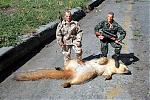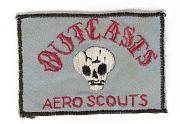RJ, you might enjoy this forum. During WW I many British had the opinion that we threw away the lives of our own men needlessly--we lost about the same number of men during our six months of fighting in that war as during the entire time of our involvement in Vietnam. The British and to a lesser extent the French were advocates of "amalgamation," with U.S. battalions being under their command instead that of the AEF. Pershing wouldn't go along with it.











Bookmarks